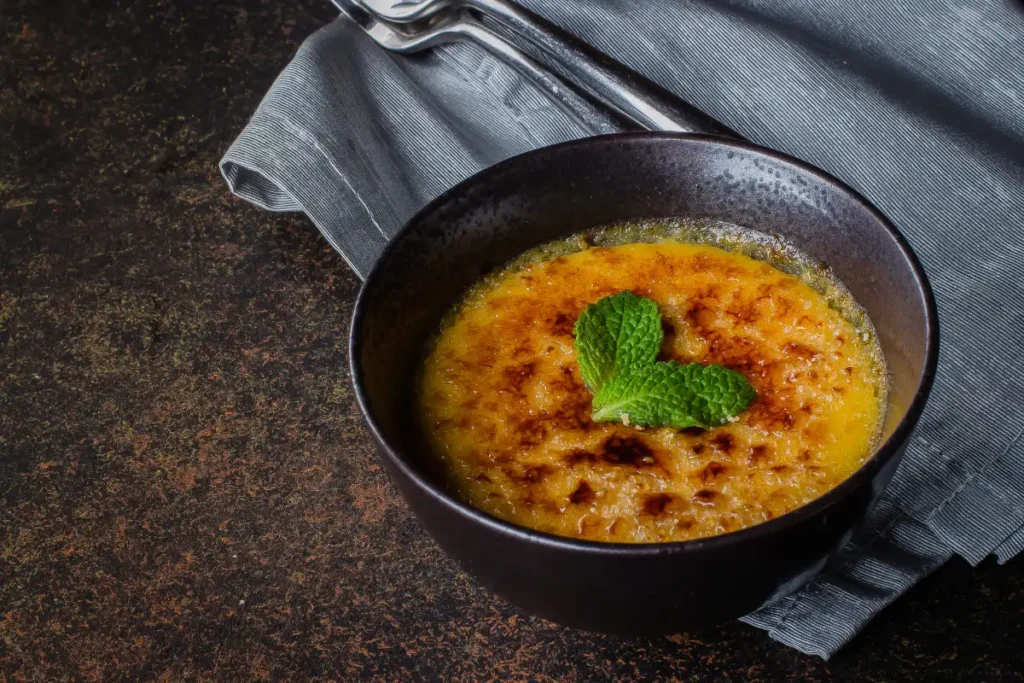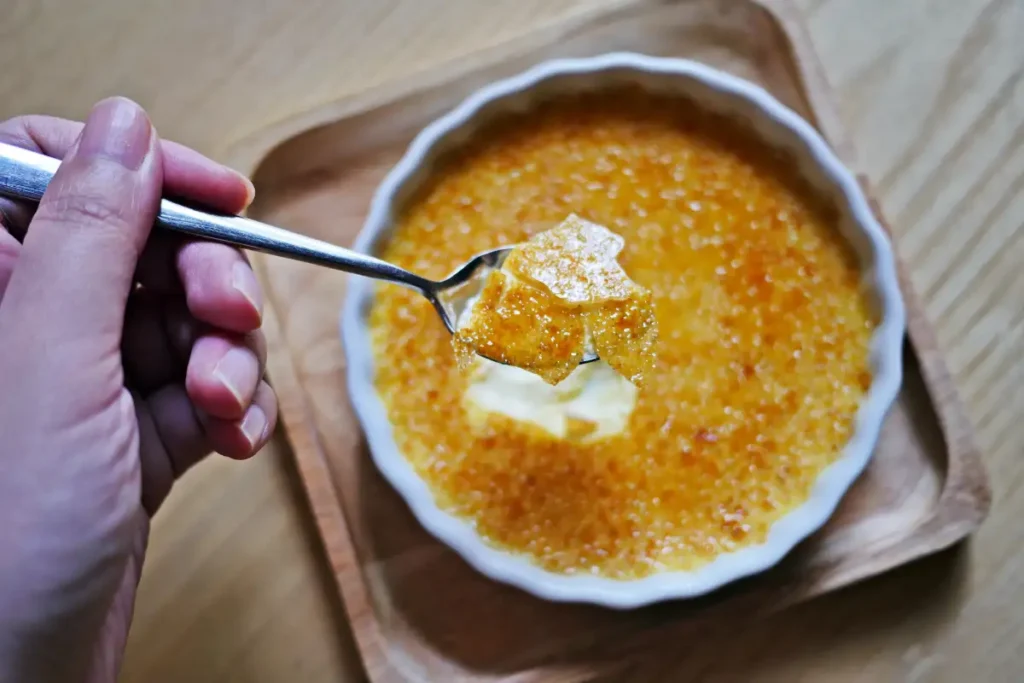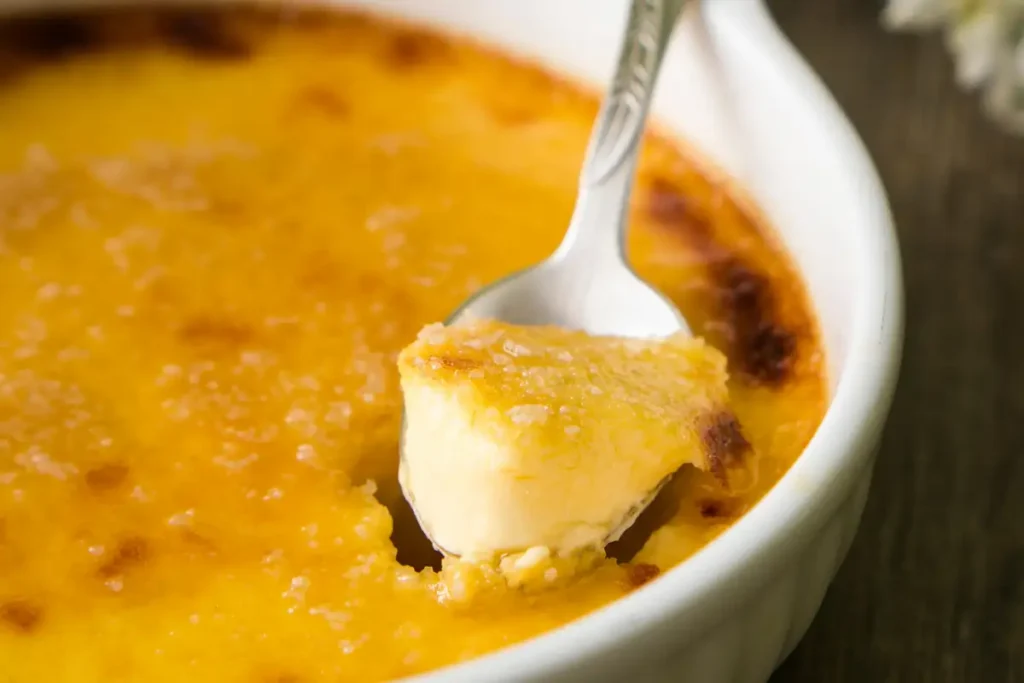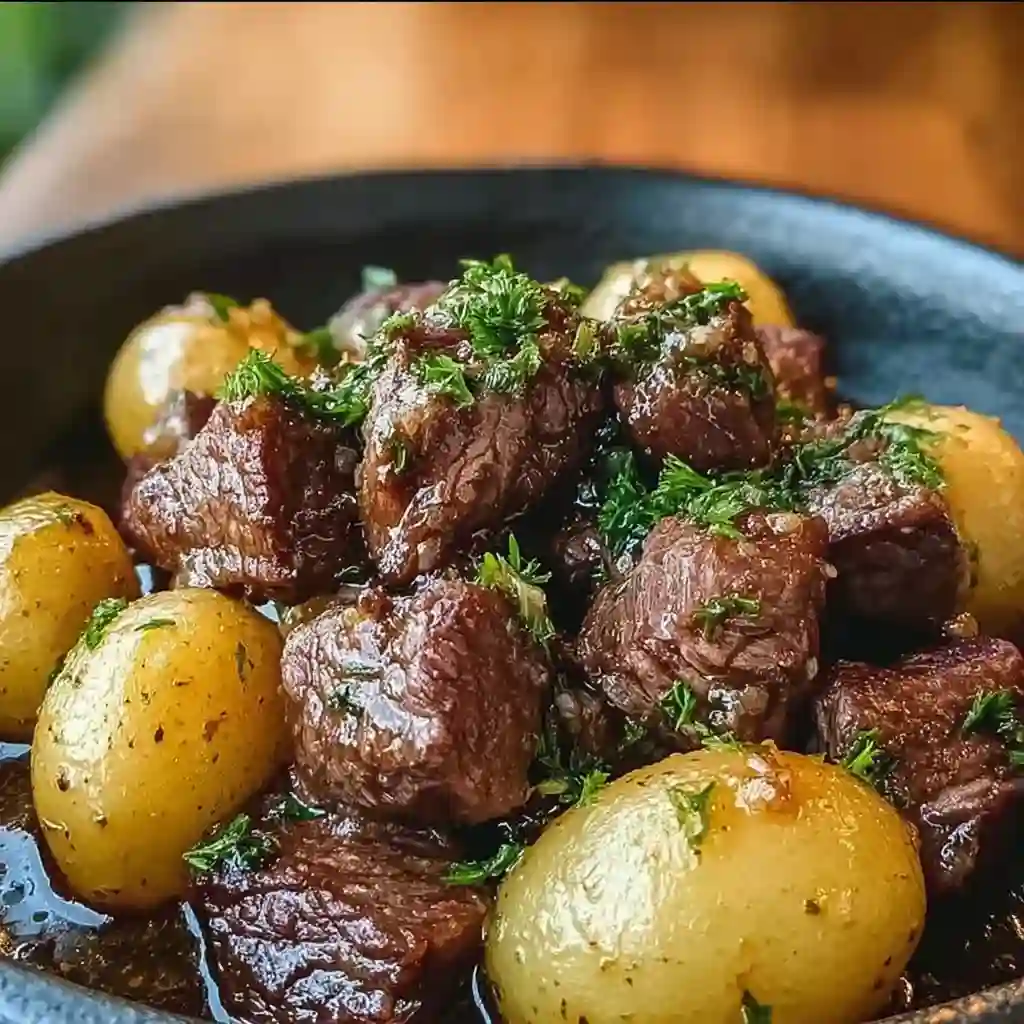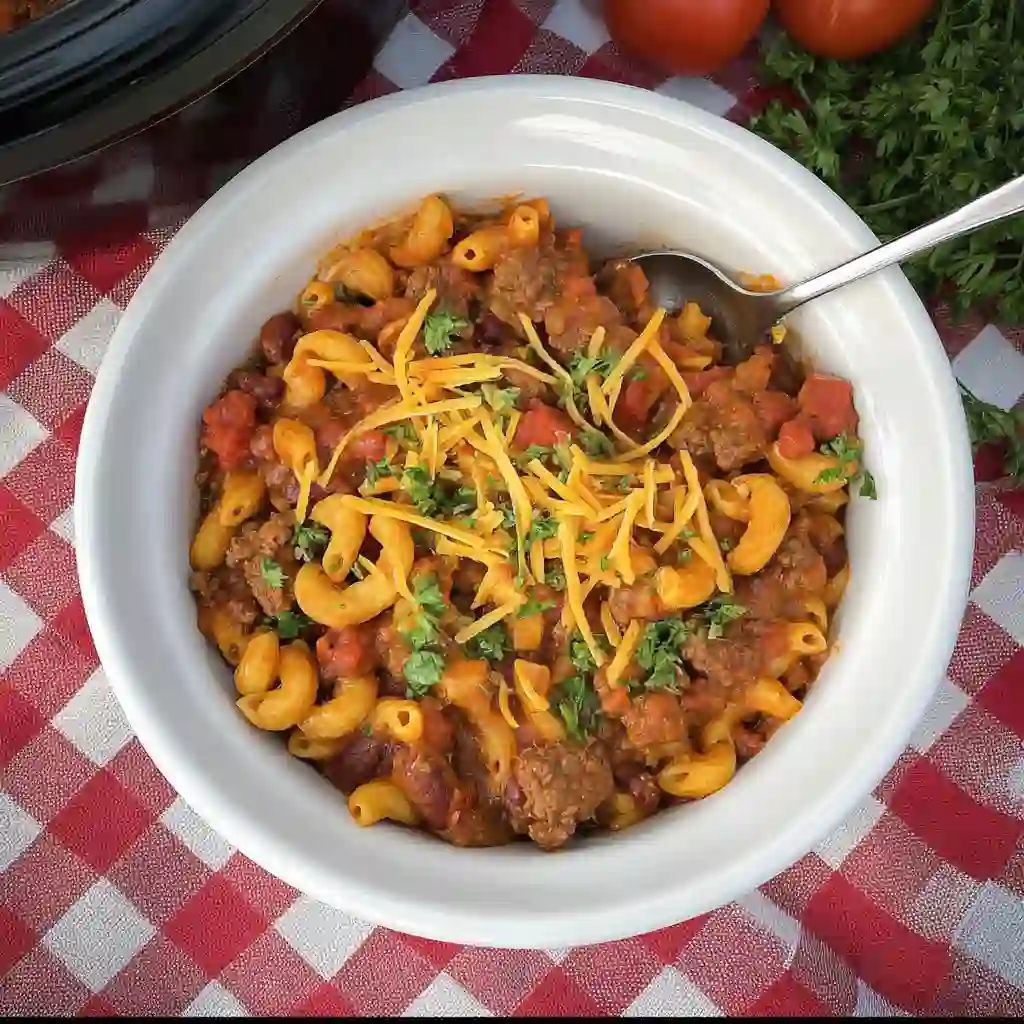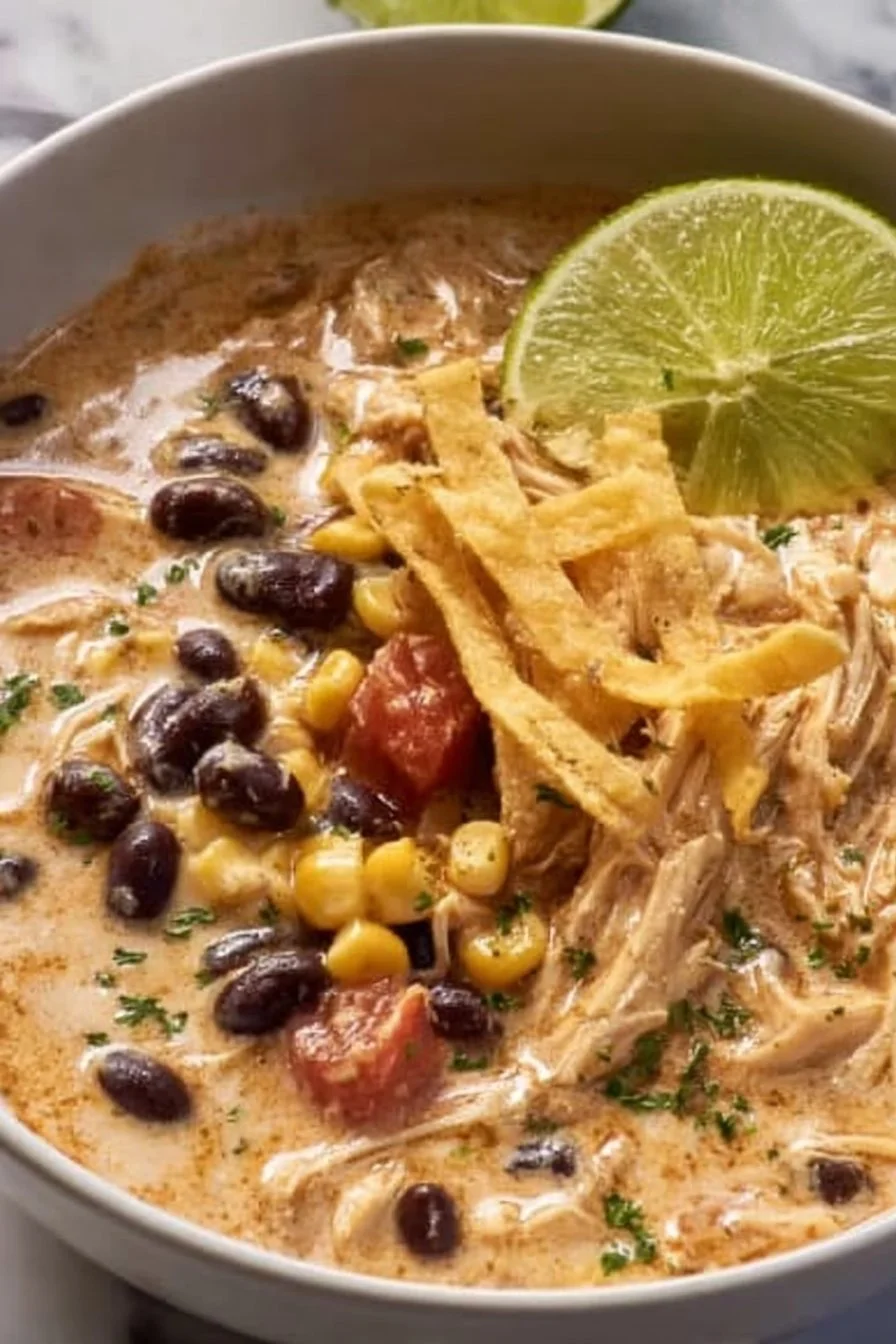Introduction to Crème Brûlée
Crème brûlée, often hailed as the crown jewel of French desserts, captivates with its rich custard base and a contrasting layer of hard caramel. This dessert not only tantalizes the taste buds but also offers a delightful interplay of textures. Originating from the grand kitchens of France, crème brûlée has traversed the globe, earning accolades and adaptations, underscoring its timeless appeal. For those who love to explore the world of baking, learning how to make mini chocolate chip cookies can add another delightful recipe to your repertoire, showcasing the joy of baking perfection.
Understanding the Key Components
The Custard Base
At the heart of every crème brûlée is its creamy, velvety custard. Traditionally infused with vanilla, this custard is a symphony of simplicity and elegance. The key is in the balance of egg yolks, cream, and sugar, which, when combined, form the foundation of this exquisite dessert.
The Caramelized Sugar Top
The signature of crème brûlée lies in its caramelized sugar top—a glistening, brittle veneer that cracks with a satisfying snap under the gentle tap of a spoon. Achieving this perfect caramel layer is both an art and a science, requiring a precise application of heat to transform sugar into a shimmering, golden crust.
Tools and Ingredients You Need
Essential Tools
To create the quintessential crème brûlée, a few tools are indispensable:
- Culinary Torch: The hero tool for achieving the iconic caramelized top.
- Ramekins: These small, round, ceramic dishes serve as the perfect vessel for individual servings.
- Fine Sieve: Ensures a smooth and lump-free custard.
Key Ingredients
- Heavy Cream: The base of the custard, providing richness and depth.
- Egg Yolks: Offer structure and a luxurious texture to the custard.
- Sugar: A dual role—sweetening the custard and forming the caramelized top.
In the next sections, we’ll delve into the step-by-step process of crafting this culinary masterpiece, highlight common pitfalls and their solutions, and explore variations to tailor this classic dessert to your palate. Stay tuned as we embark on this delicious journey, transforming simple ingredients into a dessert that’s anything but ordinary.
The Process and Techniques
Step-by-Step Guide to Making the Perfect Crème Brûlée Top
Preparing the Custard
- Heat the Cream: Begin by gently heating the heavy cream with vanilla bean (split and scraped) until it’s just below boiling—look for small bubbles at the edges.
- Mix Egg Yolks and Sugar: While the cream heats, whisk together the egg yolks and sugar until the mixture is light and airy.
- Combine: Slowly pour the warm cream into the egg mixture, stirring continuously to prevent the eggs from scrambling.
- Strain: Pour the mixture through a fine sieve into a clean bowl to remove any lumps and ensure a smooth custard.
- Bake: Divide the mixture among ramekins and bake in a water bath until set but still slightly wobbly in the center.
Cooling and Setting the Custard
After baking, it’s crucial to cool the custards at room temperature before chilling them in the refrigerator. This step ensures the custards are fully set and ready for the caramelization process.
Applying the Sugar
Sprinkle a thin, even layer of fine sugar over the surface of each custard. The sugar layer should be just enough to cover the custard without being too thick.
Caramelizing the Top
- Torch: Using a culinary torch, evenly melt and caramelize the sugar. Move the torch in a circular motion to avoid burning any spots.
- Cool: Allow the crème brûlée to sit for a few minutes after caramelizing so the sugar hardens into a glass-like crust.
Common Mistakes and How to Avoid Them
- Uneven Caramelization: Ensure the sugar is spread evenly and use a steady hand while torching.
- Sugar Burning: Keep the torch moving and don’t linger too long in one spot.
- Cracking the Custard: Avoid overheating the custard with the torch. If the custard starts to bubble, pull back immediately.
Variations of Crème Brûlée Toppings
- Different Sugars: Experiment with various types of sugar, such as brown sugar or demerara, for unique flavors and textures.
- Flavored Sugars: Infuse your sugar with citrus zest, spices, or herbs for an aromatic twist.
- Added Textures: Before serving, sprinkle with nuts or fruit for an added crunch or burst of freshness.
By adhering to these steps and tips, you’ll master the art of creating a crème brûlée that’s as delightful to crack as it is to savor. In the following sections, we’ll address some frequently asked questions and share additional tips for serving and presentation.
Crème Brûlée Recipe:
Ingredients
- 1 cup heavy cream
- 4 large egg yolks
- 1/4 cup granulated sugar (plus extra for the topping)
- 1 teaspoon pure vanilla extract or 1 vanilla bean, split and seeds scraped
- Pinch of salt
Instructions
- Preheat Oven: Preheat your oven to 325°F (162°C).
- Prepare the Cream: In a saucepan, heat the heavy cream with the vanilla extract (or vanilla bean and seeds) until it starts to simmer. Then remove it from heat.
- Mix Egg Yolks and Sugar: In a separate bowl, whisk the egg yolks with 1/4 cup sugar and a pinch of salt until the mixture is light and slightly thickened.
- Combine: Gradually pour the hot cream into the egg yolk mixture, stirring continuously to avoid cooking the eggs.
- Strain: Strain the mixture through a fine sieve into a clean bowl to ensure a smooth custard.
- Bake: Pour the mixture into ramekins placed in a baking dish. Fill the dish with hot water halfway up the sides of the ramekins. Bake until the custards are set but still slightly wobbly in the center, about 40-45 minutes.
- Chill: Remove the ramekins from the water bath and let them cool to room temperature. Then refrigerate for at least 2 hours.
- Caramelize the Top: Before serving, sprinkle a thin layer of granulated sugar over each custard. Use a torch to caramelize the sugar until it’s golden and hard. Let it sit for a minute to allow the sugar to harden.
Nutrition
- Calories: Approximately 300-400 per serving
- Fat: About 25-30g per serving
- Carbohydrates: Roughly 20-25g per serving
- Protein: Approximately 4-5g per serving
- Sugar: Around 15-20g per serving
Note: The exact nutritional values can vary based on the specific ingredients used.
Chef’s Advice
- Ingredient Quality: Use the best quality cream and vanilla you can find. The simplicity of crème brûlée means the flavor of each ingredient shines through.
- Temperature: Ensure your ingredients are at room temperature to achieve a smooth and even custard.
- Baking: Don’t overbake the custard; it should still wobble a bit in the center when you remove it from the oven.
- Sugar Topping: Use a fine layer of sugar for the topping. Too much sugar can result in a thick, hard-to-crack crust, while too little won’t provide enough crunch.
- Serving: Serve the crème brûlée soon after caramelizing the top to enjoy the contrast between the warm, crunchy sugar and the cool, creamy custard.
FAQs:
How Do You Make a Perfect Crème Brûlée Top?
To create the perfect crème brûlée top, evenly distribute a thin layer of granulated sugar over the set custard. Then, use a culinary torch to melt and caramelize the sugar until it forms a rich, golden crust. The key is to move the torch consistently to avoid burning the sugar, aiming for a glossy, evenly browned surface that contrasts beautifully with the creamy custard beneath.
How Do You Burn the Top of Crème Brûlée Without a Torch?
If you don’t have a torch, you can caramelize the sugar under a broiler. Place the ramekins with the sugared tops under the broiler, watching closely, and rotate them as necessary to ensure even caramelization. It’s crucial to monitor them constantly, as the sugar can go from perfectly caramelized to burnt in a matter of seconds.
How Do They Make Crème Brûlée Crunchy on Top?
The crunchiness of a crème brûlée top comes from the caramelized sugar. By applying a thin, even layer of sugar and using high, direct heat from a torch or broiler, the sugar quickly melts, bubbles, and then hardens into a crispy, brittle layer. The rapid heating and cooling process is what gives the crème brûlée its signature crunchy top.
How Do You Flame the Top of Crème Brûlée?
Flaming the top of crème brûlée involves caramelizing the sugar with a flame source, typically a culinary torch. After sprinkling sugar on the custard, light the torch and hold it a few inches away from the surface. Move the flame in a circular pattern over the sugar, ensuring even coverage until the sugar melts, bubbles, and turns a rich amber color. Allow it to cool and harden before serving.
Tips for Serving and Presentation
- Garnishes: Add a touch of elegance with a sprig of mint, a few fresh berries, or a dusting of powdered sugar.
- Pairings: Serve your crème brûlée with a cup of espresso or a light, refreshing tea to balance the sweetness.
- Temperature: While the custard should be chilled, the caramelized top is best enjoyed soon after torching for the optimal interplay of temperatures.
Conclusion:
Mastering the art of the perfect crème brûlée top is a rewarding endeavor that elevates this classic dessert to new heights. Whether you’re using a torch or a broiler, the key is in the careful application of heat to transform simple sugar into a dazzling, crunchy topping that’s as delightful to crack as it is to savor. Embrace the process, experiment with variations, and most importantly, enjoy the fruits of your culinary creativity. Alongside crème brûlée, consider exploring other classic desserts like the salted caramel Kentucky butter cake, which offers its own unique blend of flavors and textures. With these tips and techniques, you’re well-equipped to dazzle your guests and indulge in the exquisite simplicity of a perfectly crafted crème brûlée. Bon appétit!
With these tips and techniques, you’re well-equipped to dazzle your guests and indulge in the exquisite simplicity of a perfectly crafted crème brûlée. Bon appétit!

